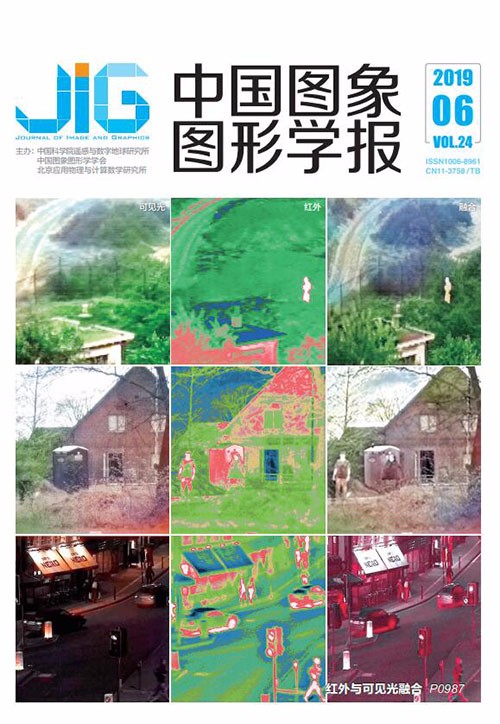
柔性密封条截面误差自动视觉测量方法
摘 要
目的 在柔性密封条误差测量过程中,密封条容易弯曲且形变较大,直接匹配精度较低,测量误差大。针对此问题,提出了一种新的柔性密封条截面误差自动视觉测量方法。方法 通过两步图像轮廓配准来获取测量图段和设计图段之间的匹配关系,然后进行误差度量和质量检验。1)通过基于多分辨率的轮廓角点提取算法提取出密封条轮廓的角点,然后基于最小化均方误差的思想进行穷举搜索,计算初始配准结果,再使用线性回归进行微调进一步提高初始配准结果;2)利用形状描述子进行局部轮廓配准,进一步获得两张轮廓图之间的精确局部配准结果;3)进行不同类型的误差定量计算和结果对比,主要测量的误差类型包括点偏移误差、点极限距离误差和角度位置误差等形位误差。结果 对密封条进行了逐步轮廓配准和多种误差测量,并在实际生产中进行了测试。实验结果表明,该系统配准结果好,测量精度高。该系统测量精度远高于密封条测量系统精度标准0.2 mm,且系统检测结果与实际人工检测结果完全一致,能有效促进柔性密封条自动化检测的发展。结论 提出了一种新的柔性密封条截面误差自动视觉测量方法,该系统具有良好的稳定性和可靠性,能有效进行柔性产品误差测量和质量检验。
关键词
Automatic vision-based deviation measurement method for cross sections of flexible sealing strips
Liao Lin, Li Jianhua(Department of Computer Science and Engineering, School of Information Science and Engineering, East China University of Science and Technology, Shanghai 200237, China) Abstract
Objective Sealing strips play an important role in the automotive industry. However, accurate results in the measurement of sealing strips are difficult to obtain due to the large deformation of their complex contour. This study proposes a novel automatic vision-based deviation measurement method for cross sections of flexible sealing strips. With this method, the matching relationship between the local contour of the captured image and the reference contour of the design drawing is computed using a two-stage image contour registration algorithm. Then, the deviation calculation is performed to evaluate the quality of sealing strips. Method The method involves three steps:global registration of the contours of the captured image and reference drawing, local registration of the contours of the captured image and reference drawing, and calculation of deviations. Global registration includes three sub-steps:corner extraction, initial registration, and fine-tuning. First, corners of the contours of the sealing strips for computer vision-based measurement are extracted using a multi-resolution-based contour corner extraction algorithm. Second, on the basis of the idea of minimizing the mean square error, an exhaustive search method is applied on the corner sets of the contours of the captured image and reference drawing to obtain the matched corner pairs and affine transformation matrix. Finally, to improve the accuracy of the initial registration, the corner pairs with larger position deviation than the average position deviation are removed from the matched corner sets, and the remaining matched corners are fed into the linear regression equation to fine-tune the affine transformation matrix. On the basis of global registration, local registration aims to determine the corresponding relationships between the local contours of the captured image and reference drawing. The shape descriptors extracted from the two global contours include shape representation and restrictions of the local contours, and the similarity of shape descriptors is used to obtain the optimal result of local registration. After the global and local registrations, the positional deviations of the sealing strips are measured on the basis of the corresponding predefined instances of positional tolerances. Here, the instances of positional tolerances are defined on the reference drawing and are used in the calculation of corresponding deviations. For all deviations, if the measured value is within the corresponding tolerance, then the quality check passes. This study concentrates on the distance and angular deviations, such as point offsetting, point distance limitation, and angular positional deviations. Point offsetting deviation refers to the offsetting distance from the original point defined on the contour of the reference drawing to the corresponding point on the contour of the captured image. The corresponding point is obtained by the similarity between two shape descriptors calculated in the previous local registration. Point distance limitation deviation refers to the maximum distance from the point on the corresponding line segment of the measurement segment to the corresponding datum line on the contour of the captured image. Point distance limitation tolerance indicates the tolerable distance from the original point to the datum line defined in the reference drawing. For angular positional deviation, the intersection of the two perpendicular bisectors of the two tolerance lines defined in the standard contour is computed as the rotation center of the angular positional deviation. In the measurement, the angular positional deviation is quantified as the value of the angle between the line segments from the barycenter of the measured local contour of the captured image to the rotation center of the angular positional deviation and from the barycenter of the standard local contour of the reference drawing to the rotation center of the angular positional deviation. Finally, the product quality can be assessed automatically on the basis of the tolerances and deviations of the sealing strips. Result In this study, the sealing strips are registered using a two-stage registration algorithm, and various deviations are measured between the local contours of the captured image and reference drawing. The proposed method has been tested in the actual production process. Several types of sealing strips have been tested during the experiments, whereas all captured images of the actual products have been rotated to increase the number of testing images. Finally, experimental results show that the method achieves good stability and reliability and is invariant to the rotation of the position of the sealing strips. These results are consistent with the manual testing results. Therefore, the system can effectively promote the development of automated testing for sealing strips. Conclusion This study proposes a novel vision-based deviation measurement method for flexible sealing strips. The proposed method achieves good stability and reliability in the actual production process, as well as effectively performs the deviation measurement and quality inspection of flexible products. The proposed method can accelerate the development of automated quality inspection because it can automatically measure the deviation of sealing strips.
Keywords
|



 中国图象图形学报 │ 京ICP备05080539号-4 │ 本系统由
中国图象图形学报 │ 京ICP备05080539号-4 │ 本系统由